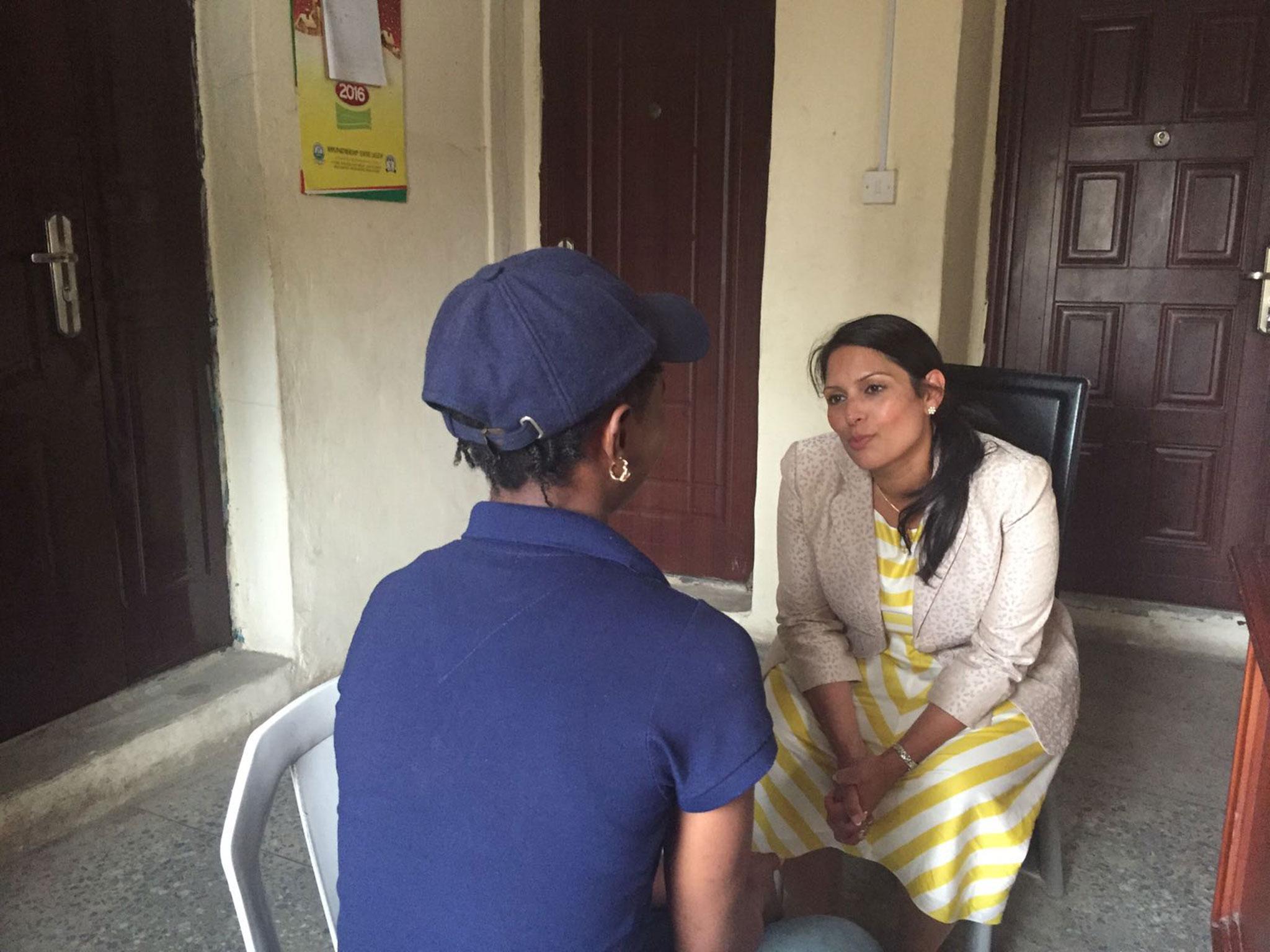Slaves on our Streets: Tracking the route of human trafficking from Nigeria to Europe – and back again
At a safe house on the outskirts of Lagos, Ed Cumming investigates the start of one of the most common trafficking routes into the UK

“I was deceived,” says Sarah. “A woman came to our village and said I could make a lot of money in Europe. I was very young, and I didn’t know about anything. I wanted to help my family, to pay for my schooling.”
Sarah, now 29, is sitting in a bare concrete room at a safe house run by Nigeria’s National Agency for Prohibition of Trafficking in Persons, or Naptip. It’s an anonymous building surrounded by a high fence, at the end of a dirt track, on the outskirts of Lagos. The exact location is a secret, and Sarah isn’t her real name.
When trafficked men and women are picked up and identified – whether in Benin, Niger, Libya or, as in Sarah’s case, on the sea – they are returned and kept here while the Naptip counsellors help to prepare them to re-enter. There are around 60 men and women in this poorly appointed facility.
It’s estimated that 800,000 Nigerians are engaged in modern slavery around the world. Thousands end up in the UK. According to the National Crime Agency Nigeria is the third most common origin country for victims of modern slavery in Britain.
Others end up in Italy, or Spain, or France. The story is the same all over. Victims are forced to work in appalling conditions – beaten, starved, abused, stripped of their documentation and dignity. More often than not they are forced into sex work. The first day of The Independent’s special investigation into modern slavery featured the story of Abigail, a Nigerian raped and forced to work as a prostitute in London before she escaped. Her story is far from unusual.
Sarah’s story is common, too. Her trafficker promised her passage to Europe and smuggled her up to Libya. There, the trafficker reneged on the initial agreement and demanded more money, and refused to give her her papers. Eventually Sarah thought she had found work in Libya, cleaning for an Arab man, but he refused pay her and would turn violent. Fleeing for her life, she finally found a boat, and it was there that she was picked up, handed over to the Nigerian authorities and flown back to Lagos. Her family still don’t know she’s returned.
Hearing the stories from the safe house it’s easy to get punch-drunk. Women promised work in bars, or even as modelling, forced to work as prostitutes. Boys told they would be football stars made to work on building sites until their bones break. At the Naptip centre, medical treatment is available, as well as counselling and jobs training, to make the victims less vulnerable to re-trafficking. Psychological trauma is common.
Experts in modern slavery refer to “push” and “pull” factors that lead people to fall victim to human traffickers. Some are obvious: poverty, and the lack of opportunities in rural Nigeria. Others are more complex. It is thought that 94 per cent of victims of modern slavery come from Edo state, despite it only being 2 per cent of Nigeria’s population. As the Naptip director-general, Julie Okah Donli, says, there it has become ingrained in the culture.
“Often the families will be aware of what is happening,” she explains. “And sometimes even the victims might know they will work as prostitutes, but they won’t appreciate how bad the conditions will be.” The “trolley” – the woman who comes back to recruit young girls – will often have been trafficked herself, and will be allowed to return on the condition that she more girls in her place.
Witchcraft, or juju, is another potent force. Before a girl leaves their village, they will go into the woods with a witchdoctor, who’ll perform a ceremony cursing her if she dares disobey her traffickers. The girls might be stripped naked, or cut with a knife. “Sometimes the priest is working with the traffickers,” Donli explains. “The ceremony will be filmed, to remind the girl, if she reaches Europe, of the curse.”
So embedded is the concept of trafficking that some girls will work together and save up in order to find themselves a trafficker. There is freedom of movement among neighbouring sub-Saharan Africa, so in some cases no crime is committed until victims cross the Libyan border. These grey areas – at precisely what point does someone become a modern slave, for example – can make it hard for law enforcement.
The British Government is committed to stopping the supply. The NCA works directly with Nigerian agencies to share information. The Independent visited the safe house with Priti Patel, the Secretary of State for International Development, who heard Sarah’s story and spoke to staff about the challenges they face. Her department has pledged £7m to investigate how to combat trafficking between Britain and Nigeria. But there is a long way to go, and the problem is growing. There are 140 million Nigerians, and the promise of a job – any job – at even a fraction of European wages, remains a powerful lure.
“I’d have preferred to stay in Nigeria,” Sarah says at last, “but there is nothing here. There’s nobody to fight for me, so I had to fight for myself.” Desperate and without the right support, she was an obvious target for human traffickers. With more than 40 million estimated victims of modern slavery around the world, there are many more Sarahs out there, hidden from view.
Subscribe to Independent Premium to bookmark this article
Want to bookmark your favourite articles and stories to read or reference later? Start your Independent Premium subscription today.
